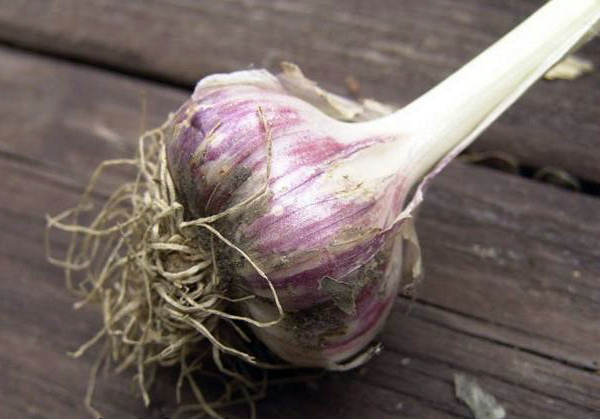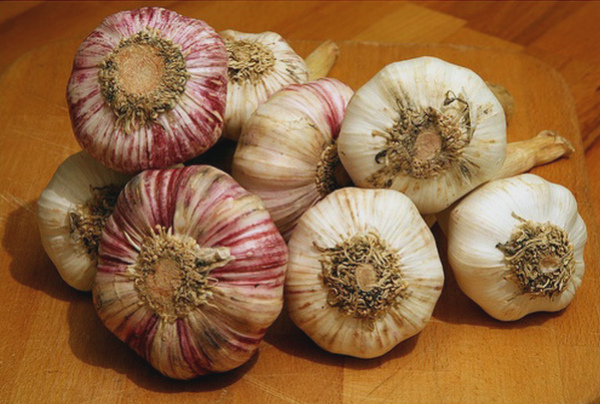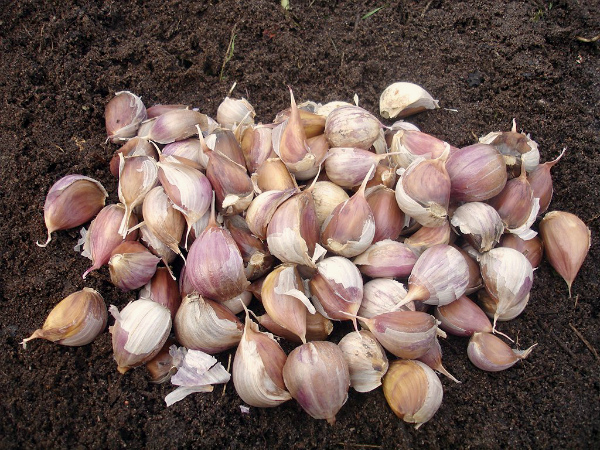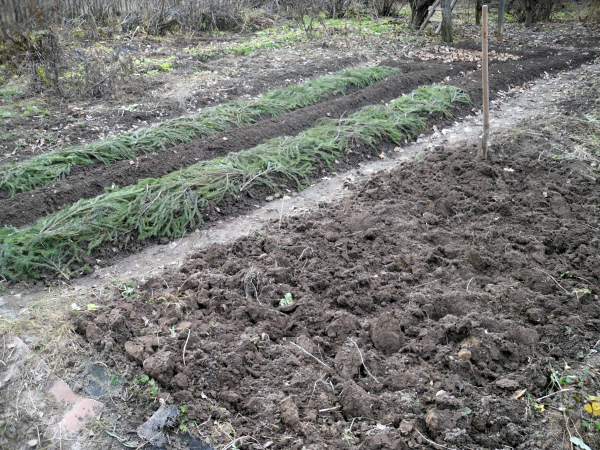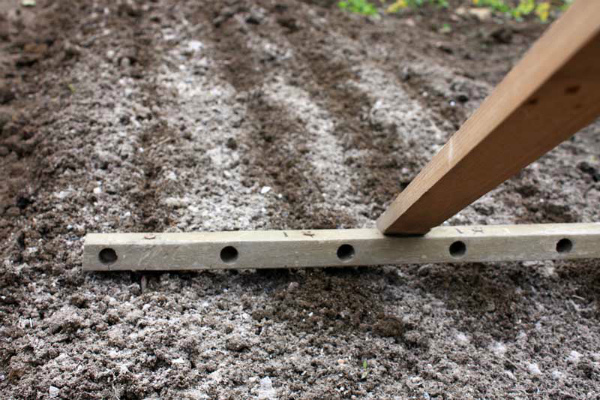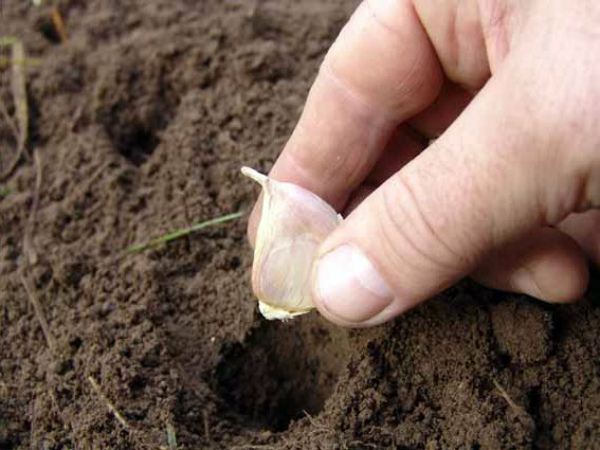When to plant winter garlic in Siberia: sowing dates
Content
The best varieties of garlic for Siberia
Siberian temperatures are quite harsh, so it is quite important to understand the varieties of winter garlic before you start planting.
It is worth remembering how winter varieties differ from spring varieties and not to be confused: a summer culture can hardly withstand frosts, while winter crops can easily outlast the cold in winter under a snow cap. Next, let's look at the most popular varieties of winter garlic.
Gribovsky Jubilee is a shooter mid-season cultivar. A garlic head usually weighs up to 45 grams and holds up to 10 cloves, covered with creamy scales with purple veins. The pungency of this variety is not very pronounced. While Gribovsky 60 is also a shooting variety, but early maturing, very sharp. Its bulb is larger, often reaching 60 grams and consists of large cloves from 5 to 12 per bulb.
Yelenovsky is also a shooter, a very fertile variety, characterized by a high yield and increased frost resistance, as well as resistance to bacterial diseases. White bulbs (about 50 g) contain only 4-7 teeth. The Spas variety is characterized by the same resistance and fertility. Its bulbs are twice as large as Yelenovsky (up to 100 g), but there are also few cloves in it - from 7 to 10 pieces per bulb. There is one more variety - Sofievsky. He, like Spas, is resistant to frost and nematode. Its head weighs 120 grams on average and has about 8 prongs.
Alcor is a mid-season cultivar that produces small, purple-scaled bulbs. Garlic heads weigh up to 40 grams, each of them has up to 6 cloves. One of the most popular varieties is Lyubasha. It gives large heads up to 130 g in weight with large teeth from 4 to 7 in one onion.
Features of planting winter garlic
Before planting garlic for the winter in Siberia, you need to decide what kind of result you want to achieve: to harvest a large harvest or to bring out a good variety. If the former, then your seed will be the tines. If the second, then the bulbs.
It is important to understand how one differs from the other. The cloves are the "fruits" "of garlic, closely adhered to the stem in the bulb in winter varieties. Bulbs are, relatively speaking, “seeds” ripening in the seed box on the arrow. In the first year after sowing, the bulbs produce bulbs with one clove (the so-called sevok), which will only grow into a full-fledged bulb the next year. Such a plant is grown in two seasons, but it guarantees a high-quality and rich harvest.
When the decision is made, it is worthwhile to take up the selection of seed and its preparation. Garlic teeth for planting are selected large and intact. This will be the key to good, correct growth.Such teeth must be hardened - soaked in a solution of potassium permanganate, an ash solution or a solution of copper sulfate.
Bulbs, however, must be dried and treated with a strong solution of potassium permanganate or an ash solution by spraying immediately before planting.
Timing
Winter garlic in Siberia is worth planting when you have completely cleared the selected plot of land from the previous crop and prepared the land. All this should take place in late September or early October, about 50 days before frost. During this time, a clove placed in the ground will have time to develop a good root system and begin its proper development. So the plant adapts as much as possible and will be ready to wait out the winter.
Seat selection
The landing site is also an important issue. It is important to consider many points when choosing the right site for sowing garlic. It is worth remembering that the culture loves loamy soil with low acidity. The earth should not accumulate a lot of moisture - this harms the development of the planted teeth, moreover, it can lead to an undesirable result: the garlic can simply rot.
Determine the location in advance, even before harvesting the predecessors. Remember that the type of plants that have grown on the site before will also determine how well the new soil will take root in the culture. By the way, it is not recommended to plant the plant in the same area twice in a row, since the previous sowing will take too much nutrients and the new crop will be rather scarce.
When you have decided on the land plot and removed all organic residues from the soil, you need to go to the stage of soil fertilization.
Proper saturation of the earth will help garlic survive the winter, even in Siberia.
It is best to fertilize the land with mullein or horse manure, feed with phosphates and potassium. Fertilizer should be applied to the ground at 20 cm - the maximum depth of the garlic root system. It is also recommended to treat the soil with a solution of copper sulfate.
After the land has been processed, you should hold it for some time under polyethylene or roofing material. The soil needs to warm up and accumulate moisture. However, the shelter must be removed for the winter so that the garlic in the ground does not overflow.
Landing technology
Before planting, after the cover is removed from the ground, the soil should be slightly damp. Now that everything is ready, you can proceed directly to planting. There are several options for how to plant garlic, and the choice of the actual one depends on the size of the land allotted for planting:
- The soil can be fed with a solution of yeast, after which the furrows can be divided, leaving 25 centimeters between them. In these furrows, denticles are planted at intervals of 10 centimeters, and then covered with earth.
- If you want to grow as much garlic as possible in a small area, you can plant the crop in two tiers. The technology is similar: you need to dig furrows up to 20 cm deep, lay the first tier of cloves. Then cover it with 5-6 centimeters of earth, plant the second tier and dig in again.
- The third way for those who do not want to dig and mark furrows once again is to take care of their depth. In this case, the beds are simply distributed at a distance of 25 cm from each other, the garlic cloves are sown and covered with earth.
It should be remembered that in all cases, after planting, the crop is recommended to be mulched with leaves or grass.
Garlic precursors
Returning to the question of the predecessors, it is worth clarifying several important details. It is best to know after which crops the sowing of garlic will yield a rich harvest, and after which - a poor one. Of course, the first rule that is easy to follow (if we are talking about winter varieties) is not to plant the crop twice in a row.
However, it is unlikely that gardeners will let the site stand idle in the summer. Because you will surely sow something. And it’s important to think about what.After potatoes, Jerusalem artichoke, rare and carrots, garlic teeth will not develop too well - there will be too few useful elements in the ground. But after melons, cabbage and legumes, the earth, on the contrary, will be saturated with useful nutrients for the growth of garlic.
Video "Two ways to plant winter garlic"
This video describes the unique experience of a Siberian gardener who manages to grow winter garlic in heavy loamy soil.

